Regression Models for Soil Water Storage Estimation Using the ESA CCI Satellite Soil Moisture Product: A Case Study in Northeast Portugal
Abstract
1. Introduction
2. Materials and Methods
2.1. Study Area
2.2. Soil Water Balance Estimation with Ground Data
2.3. ESA CCI Satellite Product
2.4. Regression Models
3. Results
3.1. Soil Water Balance and Soil Moisture during the Study Period
3.2. Relationship between the Soil Water Storage and the Satellite-Borne Soil Moisture Data
3.3. Soil Water Depletion and Recharge Phases
3.4. Outliers’ Effect on the Model Performance
4. Discussion
4.1. Model Comparison
4.2. Effect of Smax
4.3. Soil Water Recharge and Depletion
4.4. A Note on the Models’ Applicability
5. Conclusions
Author Contributions
Funding
Institutional Review Board Statement
Informed Consent Statement
Data Availability Statement
Conflicts of Interest
References
- Bojinski, S.; Verstraete, M.; Peterson, T.C.; Richter, C.; Simmons, A.; Zemp, M. The Concept of Essential Climate Variables in Support of Climate Research, Applications, and Policy. Bull. Am. Meteorol. Soc. 2014, 95, 1431–1443. [Google Scholar] [CrossRef]
- World Meteorological Organization (WMO), United Nations Educational Scientific and Cultural Organization, United Nations Environment Programme, and International Council for Science. GCOS, 154. Systematic observation requirements for satellite-based data products for climate Supplemental details to the satellite-based component of the Implementation Plan for the Global Observing System for Climate in Support of the UNFCCC (2011 Update). Geneva, Switzerland. 2011. Available online: https://library.wmo.int/index.php?lvl=notice_display&id=12907#.X-jHy9j7TIU (accessed on 10 October 2020).
- Perkins, S.E.; Argüeso, D.; White, C.J. Relationships between climate variability, soil moisture, and Australian heatwaves. J. Geophys. Res. Atmos. 2015, 120, 8144–8164. [Google Scholar] [CrossRef]
- Jung, M.; Reichstein, M.; Ciais, P.; Seneviratne, S.I.; Sheffield, J.; Goulden, M.L.; Bonan, G.; Cescatti, A.; Chen, J.; De Jeu, R.; et al. Recent decline in the global land evapotranspiration trend due to limited moisture supply. Nature 2010, 467, 951–954. [Google Scholar] [CrossRef] [PubMed]
- Stephens, C.M.; Johnson, F.M.; Marshall, L.A. Implications of future climate change for event-based hydrologic models. Adv. Water Resour. 2018, 119, 95–110. [Google Scholar] [CrossRef]
- Seneviratne, S.I.; Corti, T.; Davin, E.L.; Hirschi, M.; Jaeger, E.B.; Lehner, I.; Orlowsky, B.; Teuling, A.J. Investigating soil moisture–climate interactions in a changing climate: A review. Earth Sci. Rev. 2010, 99, 125–161. [Google Scholar] [CrossRef]
- Saft, M.; Peel, C.M.; Western, A.W.; Zhang, L. Predicting shifts in rainfall-runoff partitioning during multiyear drought: Roles of dry period and catchment characteristics. J. Am. Water Resour. Assoc. 2016, 52, 9290–9305. [Google Scholar] [CrossRef]
- Gao, W.; Wang, Z.; Huang, G. Spatiotemporal Variability of Actual Evapotranspiration and the Dominant Climatic Factors in the Pearl River Basin, China. Atmosphere 2019, 10, 340. [Google Scholar] [CrossRef]
- Lee, E.; Kim, S. Wavelet analysis of soil moisture measurements for hillslope hydrological processes. J. Hydrol. 2019, 575, 82–93. [Google Scholar] [CrossRef]
- Li, T.; Hao, X.; Kang, S. Spatiotemporal Variability of Soil Moisture as Affected by Soil Properties during Irrigation Cycles. Soil Sci. Soc. Am. J. 2014, 78, 598–608. [Google Scholar] [CrossRef]
- Liao, K.; Lai, X.; Zhou, Z.; Zhu, Q. Applying fractal analysis to detect spatio-temporal variability of soil moisture content on two contrasting land use hillslopes. Catena 2017, 157, 163–172. [Google Scholar] [CrossRef]
- Zucco, G.; Brocca, L.; Moramarco, T.; Morbidelli, R. Influence of land use on soil moisture spatial–temporal variability and monitoring. J. Hydrol. 2014, 516, 193–199. [Google Scholar] [CrossRef]
- Han, D.; Zhou, T. Soil water movement in the unsaturated zone of an inland arid region: Mulched drip irrigation experiment. J. Hydrol. 2018, 559, 13–29. [Google Scholar] [CrossRef]
- Moiwo, J.P.; Tao, F.; Lu, W. Estimating soil moisture storage change using quasi-terrestrial water balance method. Agric. Water Manag. 2011, 102, 25–34. [Google Scholar] [CrossRef]
- Yinglan, A.; Wang, G.; Liu, T.; Xue, B.; Kuczera, G. Spatial variation of correlations between vertical soil water and evapotranspiration and their controlling factors in a semi-arid region. J. Hydrol. 2019, 574, 53–63. [Google Scholar] [CrossRef]
- Bao, Z.; Zhang, J.; Wang, G.; Chen, Q.; Guan, T.; Yan, X.; Liu, C.; Liu, J.; Wang, J. The impact of climate variability and land use/cover change on the water balance in the Middle Yellow River Basin, China. J. Hydrol. 2019, 577, 123942. [Google Scholar] [CrossRef]
- Reichert, J.M.; Rodrigues, M.F.; Peláez, J.J.Z.; Lanza, R.; Minella, J.P.G.; Arnold, J.G.; Cavalcante, R.B.L. Water balance in paired watersheds with eucalyptus and degraded grassland in Pampa biome. Agric. For. Meteorol. 2017, 237–238, 282–295. [Google Scholar] [CrossRef]
- Moreira, A.A.; Ruhoff, A.L.; Roberti, D.R.; Souza, V.D.A.; Da Rocha, H.R.; De Paiva, R.C.D. Assessment of terrestrial water balance using remote sensing data in South America. J. Hydrol. 2019, 575, 131–147. [Google Scholar] [CrossRef]
- Zhang, Y.; Pan, M.; Sheffield, J.; Siemann, A.L.; Fisher, C.K.; Liang, M.; Beck, H.; Wanders, N.; MacCracken, R.; Houser, P.R.; et al. A Climate Data Record (CDR) for the global terrestrial water budget: 1984–2010. Hydrol. Earth Syst. Sci. 2018, 22, 241–263. [Google Scholar] [CrossRef]
- Chawla, I.; Karthikeyan, L.; Mishra, A.K. A review of remote sensing applications for water security: Quantity, quality, and extremes. J. Hydrol. 2020, 585, 124826. [Google Scholar] [CrossRef]
- Dorigo, W.A.; Xaver, A.; Vreugdenhil, M.; Gruber, A.; Hegyiová, A.; Sanchis-Dufau, A.D.; Zamojski, D.; Cordes, C.; Wagner, W.; Drusch, M. Global Automated Quality Control of In Situ Soil Moisture Data from the International Soil Moisture Network. Vadose Zone J. 2013, 12. [Google Scholar] [CrossRef]
- Dorigo, W.A.; Wagner, W.; Albergel, C.; Albrecht, F.; Balsamo, G.; Brocca, L.; Chung, D.; Ertl, M.; Forkel, M.; Gruber, A.; et al. ESA CCI Soil Moisture for improved Earth system understanding: State-of-the art and future directions. Remote Sens. Environ. 2017, 203, 185–215. [Google Scholar] [CrossRef]
- Vereecken, H.; Huisman, J.A.; Pachepsky, Y.; Montzka, C.; Van Der Kruk, J.; Bogena, H.; Weihermuller, L.; Herbst, M.; Martinez, G.; VanderBorght, J.; et al. On the spatio-temporal dynamics of soil moisture at the field scale. J. Hydrol. 2014, 516, 76–96. [Google Scholar] [CrossRef]
- Wanders, N.; Karssenberg, D.; De Roo, A.; De Jong, S.M.; Bierkens, M.F.P. The suitability of remotely sensed soil moisture for improving operational flood forecasting. Hydrol. Earth Syst. Sci. 2014, 18, 2343–2357. [Google Scholar] [CrossRef]
- Gruber, A.; Scanlon, T.; Van Der Schalie, R.; Wagner, W.; Dorigo, W. Evolution of the ESA CCI Soil Moisture climate data records and their underlying merging methodology. Earth Syst. Sci. Data 2019, 11, 717–739. [Google Scholar] [CrossRef]
- Nair, A.S.; Indu, J. Improvement of land surface model simulations over India via data assimilation of satellite-based soil moisture products. J. Hydrol. 2019, 573, 406–421. [Google Scholar] [CrossRef]
- Mohamed, E.S.; Ali, A.; El-Shirbeny, M.; Abutaleb, K.; Shaddad, S.M. Mapping soil moisture and their correlation with crop pattern using remotely sensed data in arid region. Egypt. J. Remote Sens. Space Sci. 2019. [Google Scholar] [CrossRef]
- Lai, C.; Zhong, R.; Wang, Z.; Wu, X.; Chen, X.; Wang, P.; Lian, Y. Monitoring hydrological drought using long-term satellite-based precipitation data. Sci. Total Environ. 2019, 649, 1198–1208. [Google Scholar] [CrossRef]
- Zhao, M.; Geruo, A.; Velicogna, I.; Kimball, J.S. Satellite Observations of Regional Drought Severity in the Continental United States Using GRACE-Based Terrestrial Water Storage Changes. J. Clim. 2017, 30, 6297–6308. [Google Scholar] [CrossRef]
- Mishra, A.; Vu, T.; Veettil, A.V.; Entekhabi, D. Drought monitoring with soil moisture active passive (SMAP) measurements. J. Hydrol. 2017, 552, 620–632. [Google Scholar] [CrossRef]
- Park, S.; Im, J.; Park, S.; Rhee, J. Drought monitoring using high resolution soil moisture through multi-sensor satellite data fusion over the Korean peninsula. Agric. For. Meteorol. 2017, 237–238, 257–269. [Google Scholar] [CrossRef]
- Sanchez, N.; González-Zamora, Á.; Martínez-Fernández, J.; Piles, M.; Pablos, M. Integrated remote sensing approach to global agricultural drought monitoring. Agric. For. Meteorol. 2018, 259, 141–153. [Google Scholar] [CrossRef]
- Jalilvand, E.; Tajrishy, M.; Ghazi Zadeh Hashemi, S.A.; Brocca, L. Quantification of irrigation water using remote sensing of soil moisture in a semi-arid region. Remote Sens. Environ. 2019, 231, 111226. [Google Scholar] [CrossRef]
- Wasko, C.; Nathan, R. Influence of changes in rainfall and soil moisture on trends in flooding. J. Hydrol. 2019, 575, 432–441. [Google Scholar] [CrossRef]
- Asoka, A.; Gleeson, T.; Wada, Y.; Mishra, V. Relative contribution of monsoon precipitation and pumping to changes in groundwater storage in India. Nat. Geosci. 2017, 10, 109–117. [Google Scholar] [CrossRef]
- Liu, Y.; Liu, Y.; Wang, W. Inter-comparison of satellite-retrieved and Global Land Data Assimilation System-simulated soil moisture datasets for global drought analysis. Remote Sens. Environ. 2019, 220, 1–18. [Google Scholar] [CrossRef]
- Plummer, S.; LeComte, P.; Doherty, M. The ESA Climate Change Initiative (CCI): A European contribution to the generation of the Global Climate Observing System. Remote Sens. Environ. 2017, 203, 2–8. [Google Scholar] [CrossRef]
- Pasik, A.; Scanlon, T.; Dorigo, W.; de Jeu, R.A.M.; Hahn, S.; van der Schaile, R.; Wagner, W.; Kidd, R.; Gruber, A.; Moesinger, L.; et al. ESA Climate Change Initiative Plus—Soil Moisture—Algorithm Theoretical Baseline Document (ATBD) D2.1 Supporting Product Version v05.2. 2020. Available online: https://www.esa-soilmoisture-cci.org/sites/default/files/documents/public/CCI%20SM%20v05.2%20documentation/ESA_CCI_SM_RD_D2.1_v1_ATBD_v05.2.pdf (accessed on 1 November 2020).
- Petropoulos, G.P.; Ireland, G.; Barrett, B. Surface soil moisture retrievals from remote sensing: Current status, products & future trends. Phys. Chem. Earth. 2015, 83–84, 36–56. [Google Scholar] [CrossRef]
- Chakravorty, A.; Chahar, B.R.; Sharma, O.P.; Dhanya, C.T. A regional scale performance evaluation of SMOS and ESA-CCI soil moisture products over India with simulated soil moisture from MERRA-Land. Remote Sens. Environ. 2016, 186, 514–527. [Google Scholar] [CrossRef]
- González-Zamora, Á.; Sanchez, N.; Pablos, M.; Martínez-Fernández, J. CCI soil moisture assessment with SMOS soil moisture and in situ data under different environmental conditions and spatial scales in Spain. Remote Sens. Environ. 2019, 225, 469–482. [Google Scholar] [CrossRef]
- Kovačević, J.; Cvijetinovic, Z.; Stančić, N.; Brodić, N.; Mihajlović, D. New Downscaling Approach Using ESA CCI SM Products for Obtaining High Resolution Surface Soil Moisture. Remote Sens. 2020, 12, 1119. [Google Scholar] [CrossRef]
- Dorigo, W.A.; Gruber, A.; De Jeu, R.A.M.; Wagner, W.; Stacke, T.; Loew, A.; Albergel, C.; Brocca, L.; Chung, D.; Parinussa, R.M.; et al. Evaluation of the ESA CCI soil moisture product using ground-based observations. Remote Sens. Environ. 2015, 162, 380–395. [Google Scholar] [CrossRef]
- Martens, B.; Gonzalez Miralles, D.; Lievens, H.; Van Der Schalie, R.; De Jeu, R.A.M.; Fernández-Prieto, D.; Beck, H.E.; Dorigo, W.A.; Verhoest, N. GLEAM v3: Satellite-based land evaporation and root-zone soil moisture. Geosci. Model Dev. 2017, 10, 1903–1925. [Google Scholar] [CrossRef]
- Pan, N.; Wang, S.; Liu, Y.; Zhao, W.; Fu, B. Global Surface Soil Moisture Dynamics in 1979–2016 Observed from ESA CCI SM Dataset. Water 2019, 11, 883. [Google Scholar] [CrossRef]
- Nicolai-Shaw, N.; Zscheischler, J.; Hirschi, M.; Gudmundsson, L.; Seneviratne, S.I. A drought event composite analysis using satellite remote-sensing based soil moisture. Remote Sens. Environ. 2017, 203, 216–225. [Google Scholar] [CrossRef]
- Hirschi, M.; Mueller, B.; Dorigo, W.; Seneviratne, S.I. Using remotely sensed soil moisture for land–atmosphere coupling diagnostics: The role of surface vs. root-zone soil moisture variability. Remote Sens. Environ. 2014, 154, 246–252. [Google Scholar] [CrossRef]
- Deng, Y.; Wang, S.; Bai, X.; Luo, G.; Wu, L.; Cao, Y.; Li, H.; Li, C.; Yang, Y.; Hu, Z.; et al. Variation trend of global soil moisture and its cause analysis. Ecol. Indic. 2020, 110, 105939. [Google Scholar] [CrossRef]
- Zohaib, M.; Kim, H.; Choi, M. Detecting global irrigated areas by using satellite and reanalysis products. Sci. Total Environ. 2019, 677, 679–691. [Google Scholar] [CrossRef]
- Sakai, T.; Iizumi, T.; Okada, M.; Nishimori, M.; Grünwald, T.; Prueger, J.; Cescatti, A.; Korres, W.; Schmidt, M.; Carrara, A.; et al. Varying applicability of four different satellite-derived soil moisture products to global gridded crop model evaluation. Int. J. Appl. Earth Obs. Geoinf. 2016, 48, 51–60. [Google Scholar] [CrossRef]
- Wang, S.; Mo, X.; Liu, S.; Lin, Z.; Hu, S. Validation and trend analysis of ECV soil moisture data on cropland in North China Plain during 1981–2010. Int. J. Appl. Earth Obs. Geoinf. 2016, 48, 110–121. [Google Scholar] [CrossRef]
- Abera, W.; Formetta, G.; Brocca, L.; Rigon, R. Modeling the water budget of the Upper Blue Nile basin using the JGrass-NewAge model system and satellite data. Hydrol. Earth Syst. Sci. 2017, 21, 3145–3165. [Google Scholar] [CrossRef]
- Gao, H.; Tang, Q.H.; Ferguson, C.R.; Wood, E.F.; Lettenmaier, D.P. Estimating the water budget of major US river basins via remote sensing. Int. J. Remote Sens. 2010, 31, 3955–3978. [Google Scholar] [CrossRef]
- Mohebzadeh, H.; Fallah, M. Quantitative analysis of water balance components in Lake Urmia, Iran using remote sensing technology. Remote Sens. Appl. Soc. Environ. 2019, 13, 389–400. [Google Scholar] [CrossRef]
- Oliveira, P.T.S.; Nearing, M.A.; Moran, M.S.; Goodrich, D.C.; Wendland, E.; Gupta, H.V. Trends in water balance components across the Brazilian. Water Resour. Res. 2014, 50, 7100–7114. [Google Scholar] [CrossRef]
- Pan, M.; Sahoo, A.K.; Troy, T.J.; Vinukollu, R.K.; Sheffield, J.; Wood, A.E.F. Multisource Estimation of Long-Term Terrestrial Water Budget for Major Global River Basins. J. Clim. 2012, 25, 3191–3206. [Google Scholar] [CrossRef]
- Sahoo, A.K.; Pan, M.; Troy, T.J.; Vinukollu, R.K.; Sheffield, J.; Wood, A.E.F. Reconciling the global terrestrial water budget using satellite remote sensing. Remote Sens. Environ. 2011, 115, 1850–1865. [Google Scholar] [CrossRef]
- Sheffield, J.; Ferguson, C.R.; Troy, T.J.; Wood, E.F.; McCabe, M.F. Closing the terrestrial water budget from satellite remote sensing. Geophys. Res. Lett. 2009, 36, 1–5. [Google Scholar] [CrossRef]
- Wang, H.; Guan, H.; Gutiérrez-Jurado, H.A.; Simmons, C.T. Examination of water budget using satellite products over Australia. J. Hydrol. 2014, 511, 546–554. [Google Scholar] [CrossRef]
- Tian, S.; Tregoning, P.; Renzullo, L.J.; Van Dijk, A.I.J.M.; Walker, J.P.; Pauwels, V.R.N.; Allgeyer, S. Improved water balance component estimates through joint assimilation of GRACE water storage and SMOS soil moisture retrievals. Water Resour. Res. 2017, 53, 1820–1840. [Google Scholar] [CrossRef]
- Girotto, M.; Reichle, R.H.; Rodell, M.; Liu, Q.; Mahanama, S.; De Lannoy, G.J.M. Multi-sensor assimilation of SMOS brightness temperature and GRACE terrestrial water storage observations for soil moisture and shallow groundwater estimation. Remote Sens. Environ. 2019, 227, 12–27. [Google Scholar] [CrossRef]
- Demirel, M.C.; Özen, A.; Orta, S.; Toker, E.; Demir, H.K.; Ekmekcioğlu, Ö.; Tayşi, H.; Eruçar, S.; Sağ, A.B.; Sari, Ö.; et al. Additional Value of Using Satellite-Based Soil Moisture and Two Sources of Groundwater Data for Hydrological Model Calibration. Water 2019, 11, 2083. [Google Scholar] [CrossRef]
- Nijzink, R.C.; Almeida, S.; Pechlivanidis, I.; Capell, R.; Gustafssons, D.; Arheimer, B.; Parajka, J.; Freer, J.; Han, D.; Wagener, T.; et al. Constraining Conceptual Hydrological Models with Multiple Information Sources. Water Resour. Res. 2018, 54, 8332–8362. [Google Scholar] [CrossRef]
- Du, H.; Fok, H.S.; Chen, Y.; Ma, Z. Characterization of the Recharge-Storage-Runoff Process of the Yangtze River Source Region under Climate Change. Water 2020, 12, 1940. [Google Scholar] [CrossRef]
- Nie, N.; Zhang, W.; Zhang, Z.; Guo, H.; Ishwaran, N. Reconstructed Terrestrial Water Storage Change (ΔTWS) from 1948 to 2012 over the Amazon Basin with the Latest GRACE and GLDAS Products. Water Resour. Manag. 2016, 30, 279–294. [Google Scholar] [CrossRef]
- Senyurek, V.; Lei, F.; Boyd, D.; Gurbuz, A.C.; Kurum, M.; Moorhead, R. Evaluations of Machine Learning-Based CYGNSS Soil Moisture Estimates against SMAP Observations. Remote Sens. 2020, 12, 3503. [Google Scholar] [CrossRef]
- Zhuo, L.; Han, D. Could operational hydrological models be made compatible with satellite soil moisture observations? Hydrol. Process. 2016, 30, 1637–1648. [Google Scholar] [CrossRef]
- Hillel, D. Introduction to Environmental Soil Physics; Elsevier: Amsterdam, The Netherlands, 2003. [Google Scholar]
- Chanzy, A.; Chadoeuf, J.; Gaudu, J.C.; Mohrath, D.; Richard, G.; Bruckler, L. Soil moisture monitoring at the field scale using automatic capacitance probes. Eur. J. Soil Sci. 1998, 49, 637–648. [Google Scholar] [CrossRef]
- Köppen, W. Das geograsphica system der Klimate [On a geographic system of climate]. In Handbuch der Klimatologie; Köppen, W., Geiger, G., Eds.; Gebr. Bontraerger: Stuttgart, Germany, 1936; pp. 1–44. [Google Scholar]
- Agroconsultores & Coba, Carta dos Solos, Carta do Uso Actual e Carta de Aptidão da Terra do Nordeste de Portugal; Universidade de Trás-os-Montes e Alto Douro: Vila Real, Portugal, 1991.
- Instituto Português do Mar e da Atmosfera (IPMA). Normais Climatológicas 1971–2000. 2019. Available online: https://www.ipma.pt/pt/oclima/normais.clima/1971-2000/ (accessed on 24 September 2019).
- Cherlet, M.; Hutchinson, C.; Reynolds, J.; Hill, J.; Sommer, S.; von Maltitz, G. World Atlas Desertification, 3rd ed.; Publication Office of the European Union: Luxembourg, 2018. [Google Scholar]
- PANCD, Programa de Acção Nacional de Combate à Desertificação, Revisão 2011/2020; Ponto Focal Nacional da Comissão das Nações Unidas de Combate à Desertificação: Lisboa, Portugal. 2011. Available online: http://www2.icnf.pt/portal/pn/biodiversidade/ei/unccd-PT/resource/doc/pandc/2011-2020-rel-fact-criticos.pdf (accessed on 1 November 2020).
- de Figueiredo, T.; Fonseca, F.; Nunes, L. (Eds.) Os solos e a suscetibilidade à desertificação no NE de Portugal. In Proteção do Solo e Combate à Desertificação: Oportunidade Para as Regiões Transfronteiriças; Instituto Politécnico de Bragança: Bragança, Portugal, 2015; pp. 87–100. [Google Scholar]
- de Figueiredo, T.; Fonseca, F.; Pinheiro, H. Fire hazard and susceptibility to desertification: A territorial approach in NE Portugal. In Multidimensão e Territórios de Risco; I. da U. de Coimbra and P. e S. RISCOS—Associação Portuguesa de Riscos: Coimbra, Portugal, 2014; pp. 117–121. [Google Scholar]
- Fonseca, F.; De Figueiredo, T.; Nogueira, C.; Queirós, A. Effect of prescribed fire on soil properties and soil erosion in a Mediterranean mountain area. Geoderma 2017, 307, 172–180. [Google Scholar] [CrossRef]
- Cavalli, A.; de Figueiredo, T.; Fonseca, F.; Hernández, Z. Fire occurrences in the last 25 years in Bragança district, Portugal: Analysis and estimation of the consequences to the soil. Territorium 2019, 26, 123–132. [Google Scholar] [CrossRef]
- de Figueiredo, T. Uma Panorâmica Sobre os Recursos Pedológicos do Nordeste Transmontano, 84th ed.; Instituto Politécnico de Bragança: Bragança, Portugal, 2013. [Google Scholar]
- Food and Agricultural Organization/United Nations Educational, Scientific and Cultural Organization. Soil Map of the World, Revised Legend, Amended 4th Draft; FAO/UNESCO: Roma, Italy, 1988. [Google Scholar]
- Thornthwaite, C.W. An Approach toward a Rational Classification of Climate. Geogr. Rev. 1948, 38, 55–94. [Google Scholar] [CrossRef]
- Allen, R.G.; Pereira, L.S.; Raes, D.; Smith, M.; Ab, W. Crop Evapotranspiration—Guidelines for Computing Crip Water Requeriments-FAO Irrigation and Drainage Paper 56; FAO: Rome, Italy, 1998; pp. 1–15. [Google Scholar]
- Thornthwaite, C.W.; Mather, J.R. The Water Balance; Publicatiions of Climatology: Centerton, NJ, USA, 1955; Volume 8. [Google Scholar]
- Thornthwaite, C.W.; Mather, J.R. Instructions and Tables for Computing Potential Evapotranspiration and Water Balance. Publ. Climatol. 1957, 10, 185–311. [Google Scholar]
- European Spatial Agency. Algorithm Theoretical Baseline Document (ATBD) D2.1 Version 04.2. in Executive Summary, no. January. Chung, D., Dorigo, W., Hahn, S., Melzer, T., Paulik, C., Reimer, C., Vreugdenhil, M., Wagner, W., Kidd, R., Eds.; 2018. Available online: https://www.esa-soilmoisture-cci.org/sites/default/files/documents/M6/CCI2_Soil_Moisture_DL2.1_ATBD_v4.2_01_Executive%20Summary.pdf (accessed on 17 March 2019).
- de Figueiredo, T.; Gonçalves, D.A. A Erosividade da Precipitação no Interior de Trás-os-Montes: Distribuição Espacial do Factor R da Equação Universal de Perda de Solo, Estimado por Modelo de Arnoldus. PEDON 1990, 9, 136–161. [Google Scholar]
- Hunt, R.; France, J.; Thornley, J.H.M. Mathematical Models in Argiculture: A Quantitative Approach to Problems in Agriculture and Related Sciences. Q. Rev. Biol. 1985, 60, 135–136. [Google Scholar] [CrossRef]
- Verhulst, P.F. Notice sur la loi que la population suit dans son accroissement. Corresp. Mathématique Phys. 1838, 10, 113–121. [Google Scholar]
- Draper, N.R.; Smith, H. Applied Regression Analysis, 3rd ed.; John Wiley & Sons: Hoboken, NJ, USA, 1998; p. 736. [Google Scholar]
- Montgomery, D.C.; Peck, E.A.; Vining, G.G. Introduction to Linear Regression Analysis, 5th ed.; John Wiley & Sons: New York, NY, USA, 2012; Volume 821. [Google Scholar]
- Carling, K. Resistant outlier rules and the non-Gaussian case. Comput. Stat. Data Anal. 2000, 33, 249–258. [Google Scholar] [CrossRef]
- Gharari, S.; Razavi, S. A review and synthesis of hysteresis in hydrology and hydrological modeling: Memory, path-dependency, or missing physics? J. Hydrol. 2018, 566, 500–519. [Google Scholar] [CrossRef]
- Malutta, S.; Kobiyama, M.; Chaffe, P.L.B.; Bonumá, N.B. Hysteresis analysis to quantify and qualify the sediment dynamics: State of the art. Water Sci. Technol. 2020, 81, 2471–2487. [Google Scholar] [CrossRef]
- Rivera, A.B.; Cardenas, E.A.; Espinoza-villar, R.; Espinoza, J.C.; Gutierrez-cori, O. On the Relationship between Suspended Sediment Concentration, Rainfall Variability and Groundwater: An Empirical and Probabilistic Analysis for the Andean Beni River, Bolivia (2003–2016). Water 2019, 11, 2497. [Google Scholar] [CrossRef]
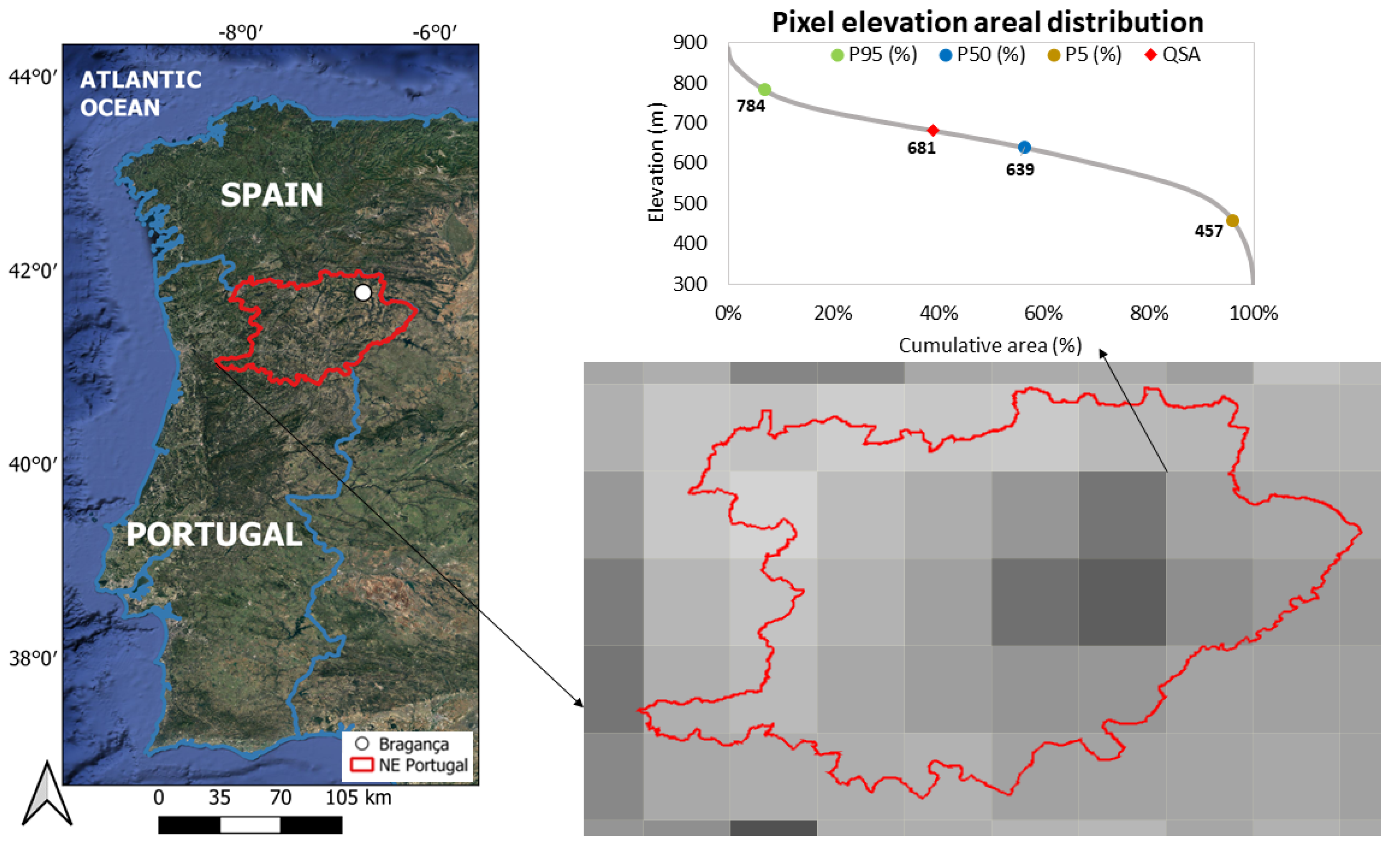

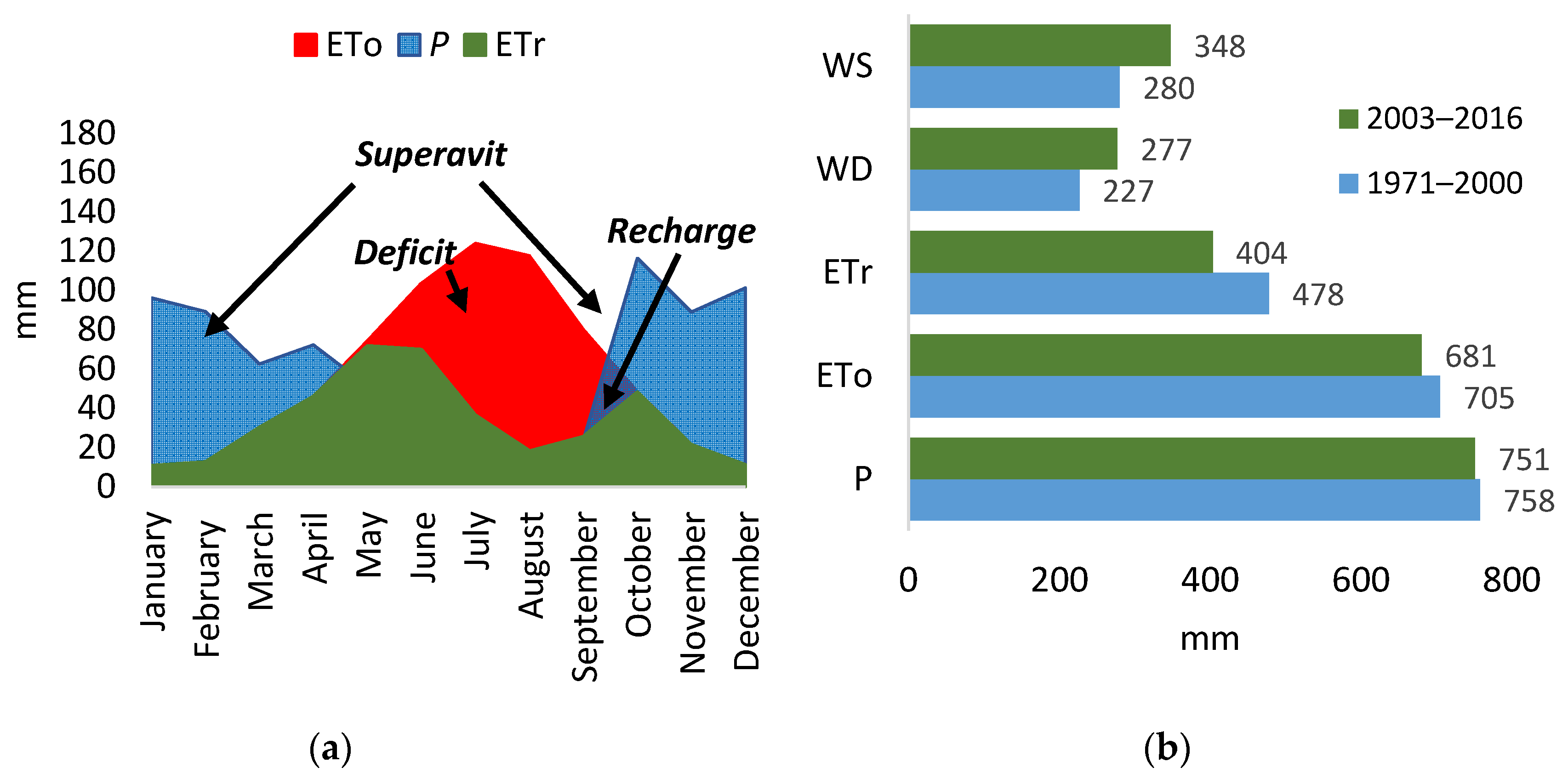

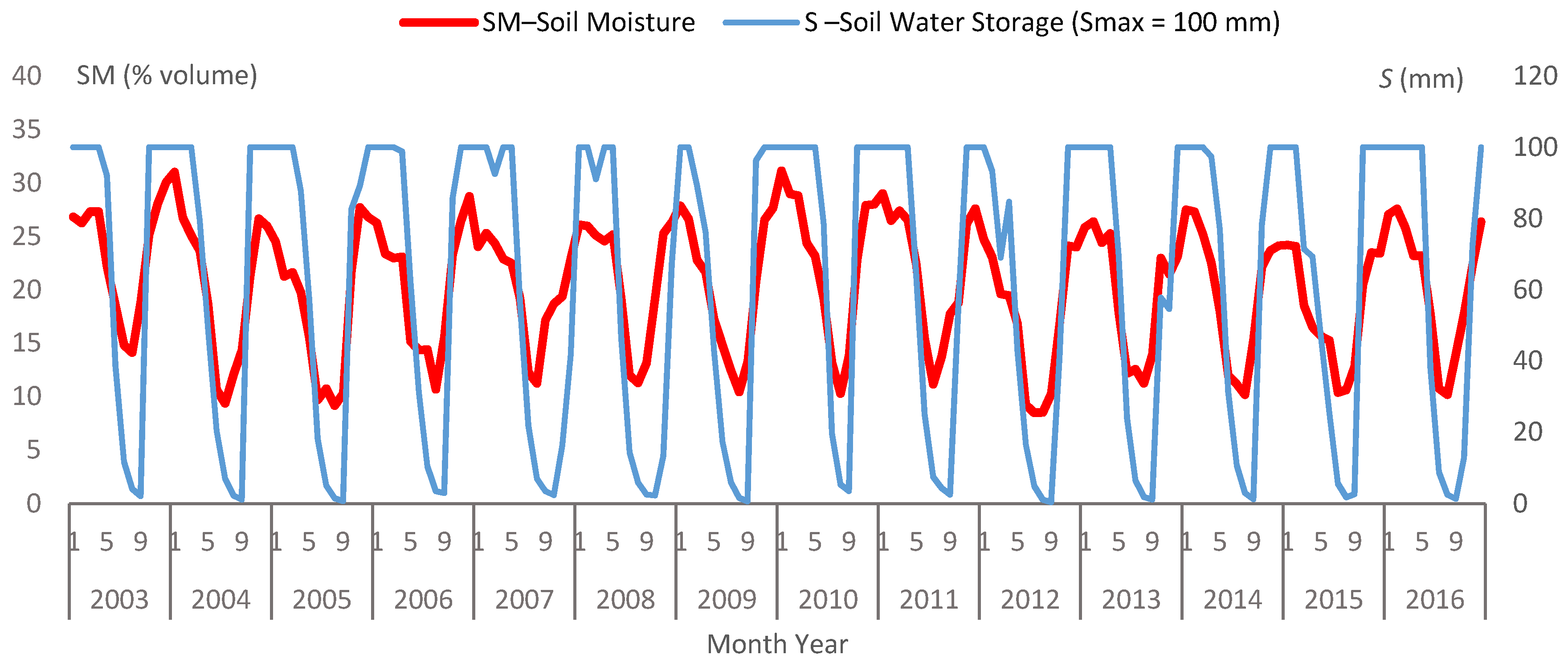

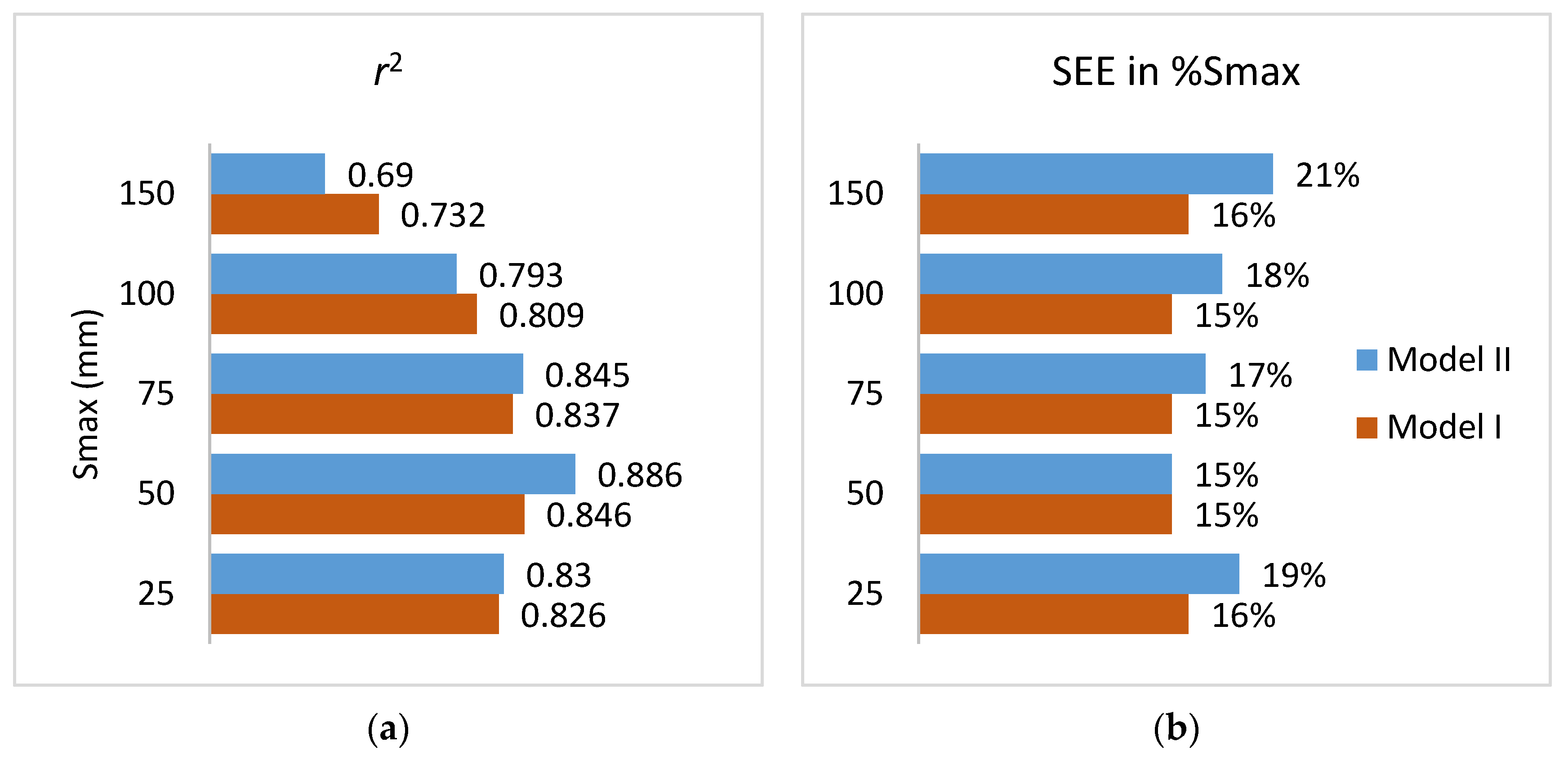


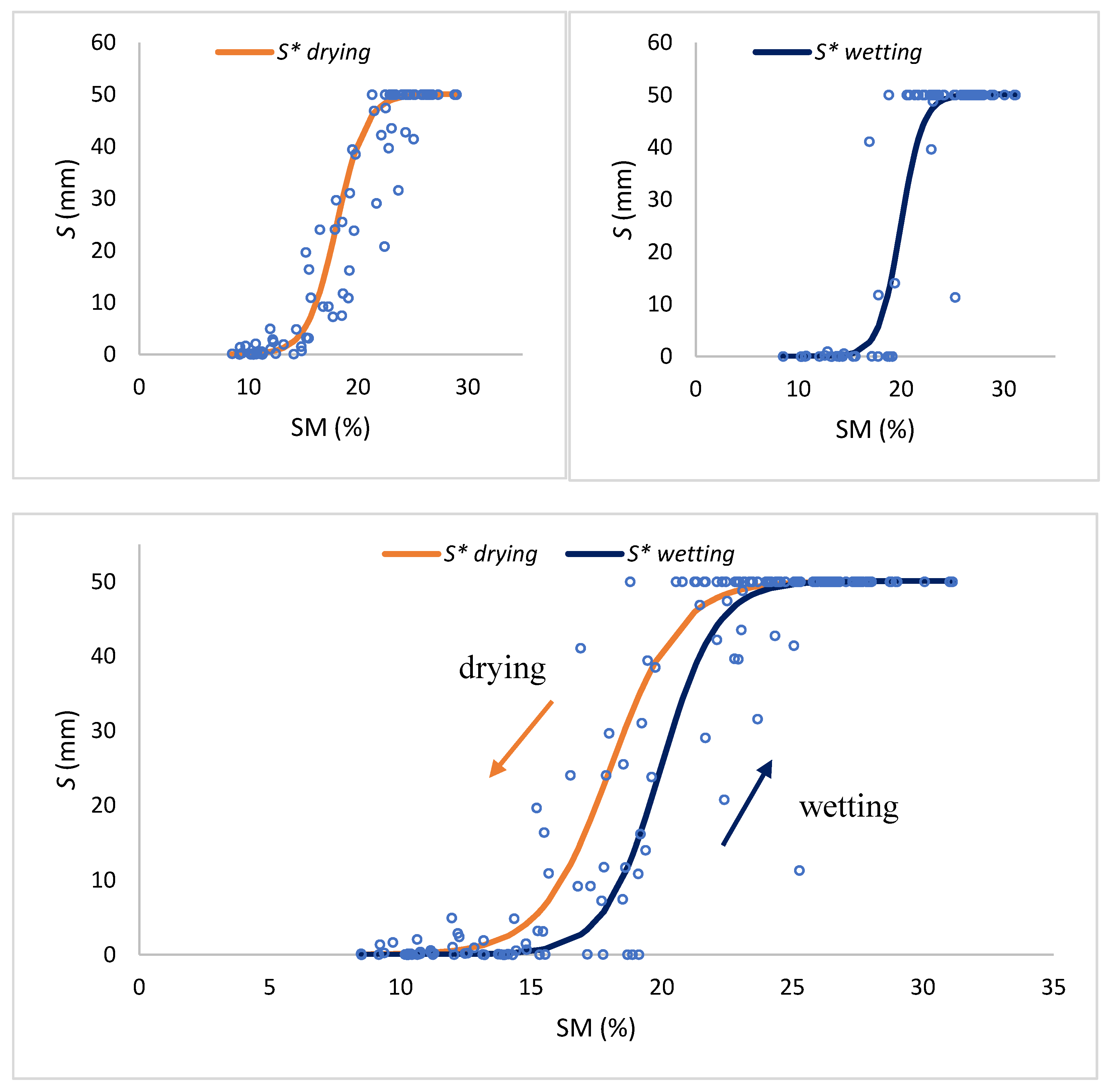
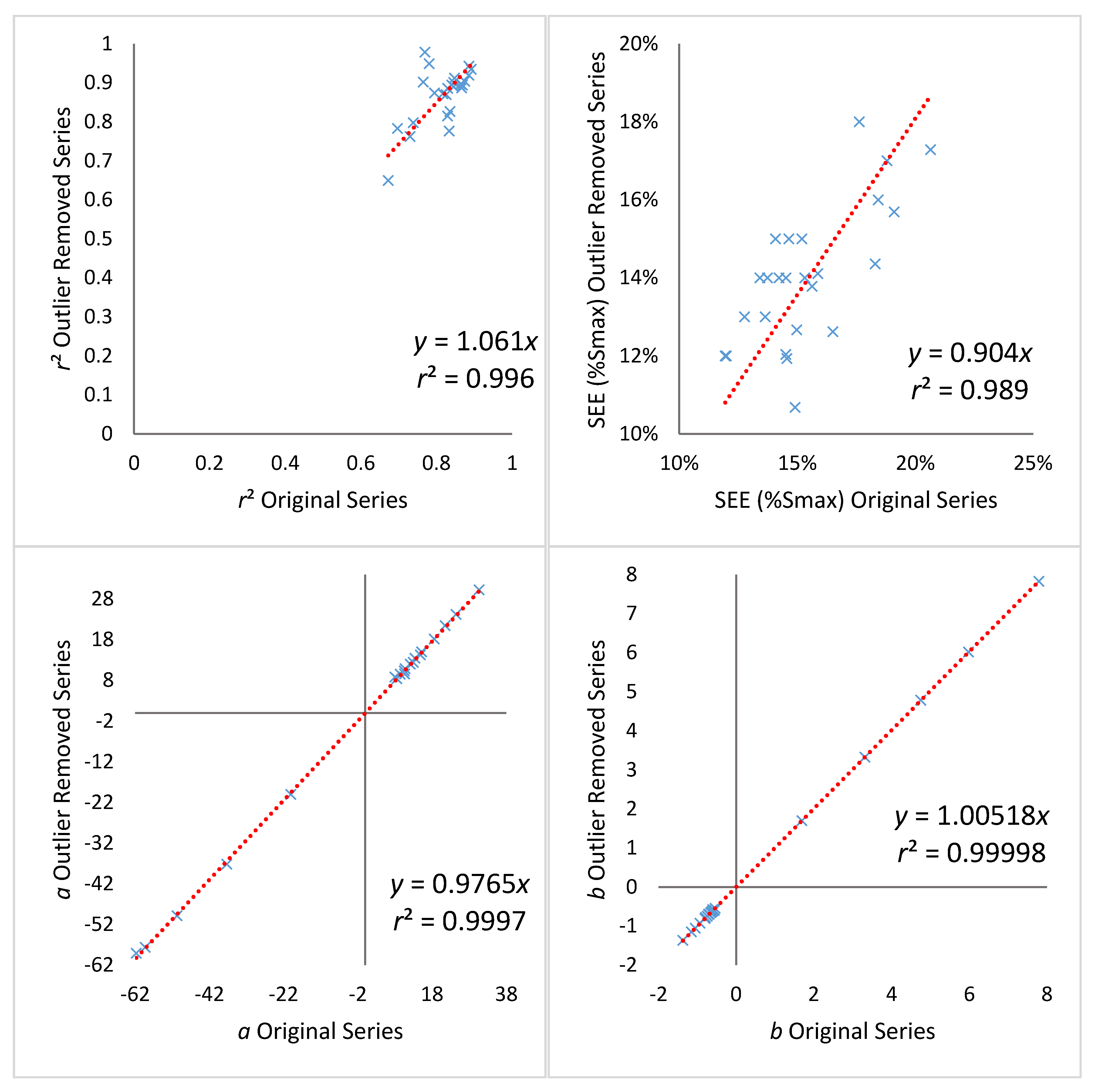
| Studies Using: | Data Assimilation in Land Surface Models | Comparison with Ground Soil Moisture Data | |
|---|---|---|---|
| Soil Water Storage as Output | Other Outputs | ||
| European Space Agency Climate Change Initiative Soil Moisture (ESA CCI SM) data | - | [26,29,45,46,47,48,49,50,62] | [25,36,37,40,41,42,43,44,47,51] |
| Other soil moisture remote sensing data | [60,61] | [24,31,33,34,63] | [21,30,31,32,40,41,66] |
| Model | Parameter | Smax (mm) | ||||
|---|---|---|---|---|---|---|
| 25 | 50 | 75 | 100 | 150 | ||
| b | 1.69 | 3.31 | 4.75 | 5.98 | 7.79 | |
| a | −20.04 | −37.25 | −50.49 | −58.88 | −61.42 | |
| (I) | r2 | 0.826 | 0.846 | 0.837 | 0.809 | 0.732 |
| Linear bounded | CE | 0.814 | 0.837 | 0.831 | 0.805 | 0.731 |
| 0 < S < Smax | RMSE (mm) | 5.017 | 9.056 | 13.293 | 18.185 | 29.100 |
| SEE (mm) | 3.909 | 7.281 | 10.993 | 15.235 | 24.065 | |
| SEE (%Smax) | 16% | 15% | 15% | 15% | 16% | |
| b | −1.15 | −0.80 | −0.69 | −0.63 | −0.54 | |
| a | 24.50 | 15.17 | 12.11 | 10.48 | 8.52 | |
| (II) | r2 | 0.830 | 0.886 | 0.845 | 0.793 | 0.690 |
| Logistic | CE | 0.810 | 0.884 | 0.833 | 0.766 | 0.624 |
| RMSE (mm) | 5.076 | 7.641 | 13.205 | 19.944 | 34.398 | |
| SEE (mm) | 4.778 | 7.454 | 12.387 | 18.299 | 30.986 | |
| SEE (%Smax) | 19% | 15% | 17% | 18% | 21% | |
| Model | Parameter | Smax (mm) | ||||
|---|---|---|---|---|---|---|
| 25 | 50 | 75 | 100 | 150 | ||
| b | −1.05 | −0.74 | −0.65 | −0.60 | −0.56 | |
| (III) | a | 21.53 | 13.42 | 10.76 | 9.43 | 8.01 |
| Segregated | r2 | 0.867 | 0.875 | 0.864 | 0.846 | 0.830 |
| Drying | CE | 0.883 | 0.892 | 0.878 | 0.856 | 0.848 |
| Curve | RMSE (mm) | 3.878 | 7.078 | 10.750 | 14.648 | 20.161 |
| (n = 91) | SEE (mm) | 4.409 | 5.974 | 8.994 | 13.421 | 20.460 |
| SEE (%Smax) | 18% | 12% | 12% | 13% | 14% | |
| b | −1.37 | −0.93 | −0.79 | −0.71 | −0.60 | |
| (III) | a | 30.70 | 18.61 | 14.86 | 12.97 | 10.64 |
| Segregated | r2 | 0.730 | 0.770 | 0.781 | 0.765 | 0.673 |
| Wetting | CE | 0.543 | 0.851 | 0.849 | 0.788 | 0.640 |
| Curve | RMSE (mm) | 7.677 | 8.839 | 13.208 | 20.279 | 36.227 |
| (n = 77) | SEE (mm) | 4.607 | 7.599 | 10.558 | 13.738 | 19.151 |
| SEE (%Smax) | 18% | 15% | 14% | 14% | 13% | |
| (III) | r2 | 0.836 | 0.892 | 0.886 | 0.869 | 0.834 |
| Segregated | CE | 0.740 | 0.875 | 0.864 | 0.820 | 0.739 |
| Drying + Wetting | RMSE (mm) | 5.930 | 7.934 | 11.940 | 17.455 | 28.665 |
| (n = 168) | SEE (mm) | 4.702 | 7.261 | 10.671 | 14.646 | 22.989 |
| SEE (%Smax) | 19% | 15% | 14% | 15% | 15% | |
| Model | Parameter | Smax (mm) | ||||
|---|---|---|---|---|---|---|
| 25 | 50 | 75 | 100 | 150 | ||
| b | 1.70 | 3.33 | 4.78 | 6.02 | 7.83 | |
| a | −20.03 | −37.15 | −49.84 | −57.62 | −59.05 | |
| (I) | r2 | 0.870 | 0.901 | 0.894 | 0.872 | 0.798 |
| Linear bounded | CE | 0.857 | 0.889 | 0.885 | 0.865 | 0.795 |
| 0 < S < Smax | RMSE (mm) | 4.39 | 7.433 | 10.93 | 15.009 | 24.982 |
| SEE (mm) | 3.446 | 5.966 | 9.029 | 12.666 | 21.163 | |
| SEE (%Smax) | 14% | 12% | 12% | 13% | 14% | |
| b | −1.15 | −0.81 | −0.69 | −0.63 | −0.55 | |
| a | 24.26 | 15.04 | 11.95 | 10.33 | 8.38 | |
| (II) | r2 | 0.886 | 0.943 | 0.912 | 0.874 | 0.783 |
| Logistic | CE | 0.875 | 0.942 | 0.906 | 0.86 | 0.743 |
| RMSE (mm) | 4.113 | 5.383 | 9.881 | 15.257 | 27.972 | |
| SEE (mm) | 3.923 | 5.341 | 9.465 | 14.357 | 25.928 | |
| SEE (%Smax) | 16% | 11% | 13% | 14% | 17% | |
| b | −1.05 | −0.75 | −0.65 | −0.61 | −0.59 | |
| (III) | a | 21.49 | 13.47 | 10.84 | 9.53 | 8.83 |
| Segregated | r2 | 0.887 | 0.904 | 0.897 | 0.890 | 0.815 |
| drying | CE | 0.881 | 0.892 | 0.878 | 0.868 | 0.785 |
| curve | RMSE (mm) | 3.900 | 7.074 | 10.747 | 14.099 | 26.175 |
| SEE (mm) | 4.420 | 5.981 | 8.995 | 13.526 | 18.826 | |
| SEE (%Smax) | 18% | 12% | 12% | 14% | 13% | |
| b | −1.37 | −0.93 | −0.78 | −0.70 | −0.58 | |
| (III) | a | 30.26 | 18.19 | 14.27 | 12.41 | 9.56 |
| Segregated | r2 | 0.762 | 0.979 | 0.949 | 0.902 | 0.649 |
| wetting | CE | 0.686 | 0.977 | 0.947 | 0.89 | 0.569 |
| curve | RMSE (mm) | 6.195 | 3.352 | 7.660 | 14.290 | 31.208 |
| SEE (mm) | 4.030 | 7.337 | 11.062 | 14.324 | 19.020 | |
| SEE (%Smax) | 16% | 15% | 15% | 14% | 13% | |
| (III) | r2 | 0.827 | 0.935 | 0.920 | 0.895 | 0.776 |
| Segregated | CE | 0.812 | 0.934 | 0.912 | 0.879 | 0.733 |
| drying + wetting | RMSE (mm) | 5.035 | 5.750 | 9.520 | 14.183 | 28.379 |
| curve | SEE (mm) | 4.333 | 6.899 | 10.637 | 14.715 | 20.307 |
| SEE (%Smax) | 17% | 14% | 14% | 15% | 14% | |
Publisher’s Note: MDPI stays neutral with regard to jurisdictional claims in published maps and institutional affiliations. |
© 2020 by the authors. Licensee MDPI, Basel, Switzerland. This article is an open access article distributed under the terms and conditions of the Creative Commons Attribution (CC BY) license (http://creativecommons.org/licenses/by/4.0/).
Share and Cite
de Figueiredo, T.; Royer, A.C.; Fonseca, F.; de Araújo Schütz, F.C.; Hernández, Z. Regression Models for Soil Water Storage Estimation Using the ESA CCI Satellite Soil Moisture Product: A Case Study in Northeast Portugal. Water 2021, 13, 37. https://doi.org/10.3390/w13010037
de Figueiredo T, Royer AC, Fonseca F, de Araújo Schütz FC, Hernández Z. Regression Models for Soil Water Storage Estimation Using the ESA CCI Satellite Soil Moisture Product: A Case Study in Northeast Portugal. Water. 2021; 13(1):37. https://doi.org/10.3390/w13010037
Chicago/Turabian Stylede Figueiredo, Tomás, Ana Caroline Royer, Felícia Fonseca, Fabiana Costa de Araújo Schütz, and Zulimar Hernández. 2021. "Regression Models for Soil Water Storage Estimation Using the ESA CCI Satellite Soil Moisture Product: A Case Study in Northeast Portugal" Water 13, no. 1: 37. https://doi.org/10.3390/w13010037
APA Stylede Figueiredo, T., Royer, A. C., Fonseca, F., de Araújo Schütz, F. C., & Hernández, Z. (2021). Regression Models for Soil Water Storage Estimation Using the ESA CCI Satellite Soil Moisture Product: A Case Study in Northeast Portugal. Water, 13(1), 37. https://doi.org/10.3390/w13010037







